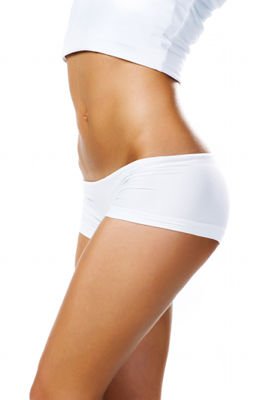Tumescent liposuction has proven to be the most effective method of improving body shape and contour volume, especially in treating lipodystrophic regions. It is ideal for the elimination of localised fat deposits and slight alterations in body weight.
As the procedure was consolidated, larger body areas were addressed with increased surgical times and longer anaesthetic processes, the outcome was a higher risk and unsatisfying results.
 However, these drawbacks have not reduced the social demand to improve the body contour, rather to the contrary, as the search for techniques with minimal risk and invasiveness is on the rise. Techniques are needed that do not require major anesthesia and that allow the patient to immediately resume their normal activities.
However, these drawbacks have not reduced the social demand to improve the body contour, rather to the contrary, as the search for techniques with minimal risk and invasiveness is on the rise. Techniques are needed that do not require major anesthesia and that allow the patient to immediately resume their normal activities.
In these cases, the effectiveness of radiofrequency, ultrasounds and cryolipolysis in reducing fat accumulation has been well proven. The feature of all of these techniques is that they induce a result, but do not implement it as in the case of liposuction, particularly in the details and nuances achieved with liposuction. Therefore, the outcome varies depending on each patient's response and on occasion they do not satisfy the physician or the patient's expectations.
However, liposuction does control the shape and correction of the body contour volume, since it is much more accurate. Optimum results are conditioned solely by the physician's skill in performing the technique and the readaptation of the skin depends exclusively on the biology.
Laser in body shaping treatment was introduced as a new tool in hands of the physician who aims at correcting the shape and volume of the treated areas in a personalised manner. Laser lipolysis reduces the trauma associated with traditional liposuction and increases aspiration selectivity. At the same time, the thermal effect of laser on the dermis and septa of the fatty tissue improves readaptation of the skin, an unattainable objective in conventional liposuction.
The main objectives of this new technique, still under development, are:
The advantages of a reduced optical fibre and aspiration cannula are added to these objectives; which on the one hand provides the treatment with a much less invasive facet than other techniques, and on the other hand facilitating the procedure for the surgeon.
The laser lipolysis technique is based on subtle increases in fat tissue temperature that liberate the triglycerides stored in the fat cells. These liquefy and are subsequently aspirated. The light energy delivered by the laser is absorbed by the receptive chromophores (structures sensitive to the wavelength of each laser) in the fat cells, which produced enough specific heating to attain thermal damage. The heat also produces coagulation of the collagen fibres and the small vessels that reduce operative trauma while achieving skin contraction.
The technique is performed in four consecutive stages:
Tolerance has been satisfactory and the down-time very low. Patients are satisfied with the tolerance, efficiency and accomplishment of their expectations. Over 90% are willing to recommend the procedure. More studies would be needed to adjust the dosimetry and explain diverse responses in different areas.
We believe that the procedure applied has proven to be safe, with good correction in shape and volume, high tolerance and satisfaction levels on behalf of the patient. Good results have been achieved in skin behaviour in a large number of cases, something not expected with conventional liposuction. None of our patients experienced major complications.
Javier Moreno Moraga and Josefina Royo de la Torre
For personalised informative consultation of Laser Lipolysis treatment, contact IML now and we will give you a gree informative consultation with one of our medical experts.